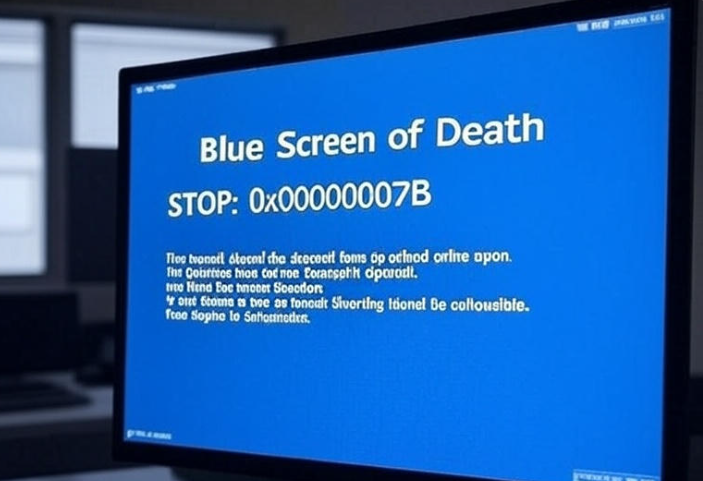The automotive world is witnessing one of its biggest corporate shake-ups in decades. Continental AG, the German tire and automotive parts giant that’s been around for over 150 years, is doing something unprecedented – they’re splitting their company in half. The automotive division, which makes everything from sensors to software for modern cars, is becoming its own independent company called Aumovio. And here’s the kicker: it’s going public on the stock market in September 2025.
This isn’t just another corporate restructuring story that’ll bore you to tears. This is a massive bet on the future of how cars work, who builds them, and where the money flows in the auto industry. Let’s break down why this matters and what it means for everyone from car buyers to investors.
What’s Actually Happening Here?
Think of Continental as a massive company with two very different personalities. On one side, you have the tire business – the part most people know. They make those black rubber circles that keep your car rolling down the road. It’s a steady, predictable business that’s been around forever.
On the other side, you have the automotive division – the tech wizards who create the electronic brains, sensors, and software that make modern cars smart. This division pulls in about $23 billion in sales annually, which is serious money. But here’s the problem: these two sides of the business are like oil and water. They serve different customers, face different challenges, and need different strategies to succeed.
Continental’s Executive Board decided to evaluate in detail a spin-off with subsequent 100% public listing of the Automotive group sector on the Frankfurt stock exchange back in August 2024. Now, almost a year later, they’re making it happen.
Meet Aumovio: The New Kid on the Block
The automotive division won’t just become independent – it’s getting a complete makeover with a new name: Aumovio. Aumovio stands for innovation, software-defined vehicles and the future of mobility, and they unveiled this new brand at Auto Shanghai 2025.
The name might sound a bit sci-fi, but there’s method to the madness. In an industry that’s rapidly shifting toward electric vehicles, autonomous driving, and connected cars, having a fresh brand identity helps signal that this isn’t your grandfather’s auto parts company. This is a tech company that happens to work with cars.
Following the expected approval at the Continental Annual Shareholders’ Meeting on April 25, 2025, Aumovio is scheduled to list on the Frankfurt Stock Exchange in September 2025. The leadership team, headed by Philipp von Hirschheydt, is clearly excited about the independence. “As an independent company, we gain significantly more creative power and speed,” von Hirschheydt explained.
Why This Split Makes Perfect Sense
Here’s the thing about the automotive industry right now – it’s going through the biggest transformation since Henry Ford figured out the assembly line. Cars aren’t just mechanical machines anymore; they’re computers on wheels. The average modern vehicle has more lines of code than a fighter jet. That changes everything about how these companies need to operate.
Traditional tire companies move at one speed. They focus on materials, manufacturing efficiency, and gradual improvements. But automotive technology companies need to move at Silicon Valley speed. They’re dealing with software updates, artificial intelligence, and technology that becomes obsolete in months, not years.
By splitting apart, both companies can focus on what they do best. Continental can perfect the art of making better tires without worrying about whether their latest AI algorithm is competitive. Meanwhile, Aumovio can chase the latest automotive tech trends without being held back by the more conservative approach that works well for tire manufacturing.
The Numbers Game: What Investors Need to Know
Let’s talk money, because that’s what drives these decisions. Continental’s auto parts division generated sales of 19.4 billion euros ($23 billion) in 2024, down 4.3 percent year on year. That decline isn’t necessarily bad news – it reflects the challenging transition period the entire auto industry is going through as it shifts toward electric and autonomous vehicles.
For current Continental shareholders, here’s how the split works: shareholders get 1-for-2 shares of the AUMOVIO spinoff. So if you own 100 shares of Continental today, you’ll end up with 100 shares of the new Continental (focused on tires) plus 50 shares of Aumovio.
This kind of corporate spin-off often creates value for shareholders because it allows each company to be valued more appropriately by the market. Investors who want steady, dividend-paying tire companies can stick with Continental. Those who want to bet on the high-growth, high-risk world of automotive technology can focus on Aumovio.
The Tech Revolution Driving This Change
To understand why this spin-off matters, you need to grasp just how much cars have changed in the past decade. Modern vehicles are rolling computers with thousands of sensors, cameras, and electronic components. They need to process massive amounts of data in real-time to enable features like adaptive cruise control, lane-keeping assistance, and eventually, full autonomous driving.
This is where Aumovio comes in. They’re not just making brake pads and engine parts. They’re creating the electronic nervous system that allows cars to see, think, and react. Their technology includes everything from radar sensors that help cars avoid collisions to the software platforms that manage electric vehicle battery systems.
The company is positioning itself at the center of several massive automotive trends: electrification, autonomous driving, and connected vehicles. Each of these trends represents a multi-billion-dollar market opportunity, but they also require completely different business models than traditional auto parts manufacturing.
What This Means for Car Buyers
If you’re wondering how this corporate chess move affects you as a car buyer, the answer is: probably in good ways, eventually. Independent companies tend to be more agile and innovative than large, bureaucratic corporations. Aumovio, freed from the constraints of being part of a traditional industrial company, should be able to develop new automotive technologies faster.
This could mean better safety systems, more efficient electric vehicles, and smarter in-car technology reaching the market sooner. It might also mean more competitive pricing as Aumovio competes directly with other automotive tech companies without worrying about protecting other parts of a larger corporate empire.
The Risks and Challenges Ahead
Of course, this transformation isn’t without risks. Spin-offs can be messy, especially when they involve companies as large and complex as Continental’s automotive division. There are questions about how intellectual property will be divided, how existing customer relationships will be managed, and whether the new company will have enough financial resources to compete with tech giants like Tesla or traditional powerhouses like Bosch.
The automotive technology sector is also incredibly competitive and fast-moving. Companies that are leaders today can become irrelevant within a few years if they bet on the wrong technology or fail to adapt quickly enough. Aumovio will be competing not just with other automotive suppliers, but potentially with tech companies like Google, Apple, and Amazon that are all interested in the automotive space.
The Schaeffler family, which holds a controlling interest in automotive supplier Schaeffler, also owns 46 percent of Continental’s shares, which adds another layer of complexity to the corporate governance of both the original company and the spin-off.
The Broader Industry Impact
This move by Continental is part of a larger trend in the automotive industry. Traditional companies are being forced to choose: evolve or become irrelevant. General Motors spun off its parts division years ago. Ford has separated its electric vehicle operations. Even tech companies are making big bets – Google’s Waymo focuses purely on autonomous driving, while Tesla has built its entire business model around being a technology company that makes cars.
The creation of Aumovio signals that the industry is accepting that automotive technology and traditional manufacturing are becoming separate businesses that require different approaches, different investors, and different management philosophies.
What to Watch For
On September 18, 2025, Continental’s Automotive group sector is expected to go public as the independent company AUMOVIO. This date is now approaching fast, and there are several things worth watching.
First, how will the market value Aumovio compared to other automotive technology companies? The initial stock price and trading volume will give us insights into investor appetite for automotive tech investments.
Second, what will Aumovio’s first moves be as an independent company? Will they make acquisitions to expand their technology portfolio? Will they partner with electric vehicle startups or traditional automakers?
Finally, how will this affect Continental’s remaining tire business? Without the automotive division, Continental will be a much smaller, more focused company. This could make them more efficient, but it might also make them more vulnerable to economic cycles in the tire industry.
Insights
Continental’s decision to split into two companies represents more than just corporate restructuring – it’s a recognition that the automotive industry has fundamentally changed. The skills, resources, and business models needed to succeed in automotive technology are dramatically different from those needed in traditional manufacturing.
For investors, this creates new opportunities and choices. For the automotive industry, it adds another major player focused purely on the technology that will define the next generation of vehicles. For consumers, it potentially means faster innovation and better automotive technology.
Whether Aumovio succeeds as an independent company remains to be seen. But one thing is certain: this spin-off is a clear signal that the automotive industry’s transformation is accelerating, and companies that want to survive need to adapt quickly.
The September 18, 2025 IPO date is circled on calendars across the automotive and investment worlds. It represents not just the birth of a new company, but a major milestone in the ongoing transformation of how we think about cars, technology, and the intersection between the two.
As we watch this story unfold, remember that we’re witnessing history in the making. The automotive industry that emerges from this current transformation period will look very different from the one we knew just a decade ago. Companies like Aumovio are betting they’ll be at the center of that new world.



